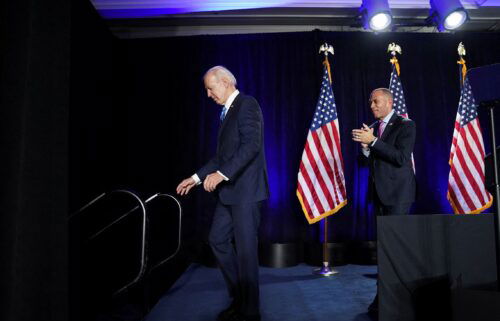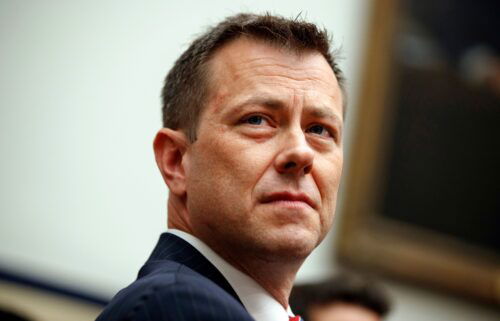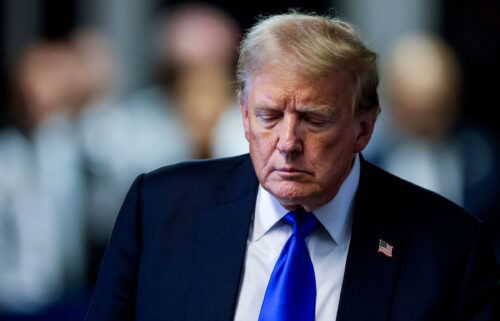Discord at Supreme Court mirrors diminishment of democratic norms

By Joan Biskupic, CNN legal analyst & Supreme Court biographer
Supreme Court justices are facing protests from outside their newly fortified perimeter — and from within — as they finish an epic session destined to transform the law in America.
The warnings from dissenting liberal justices battling the conservative supermajority have become overt. Justice Sonia Sotomayor referred last Wednesday to “a restless and newly constituted Court” that “sees fit … to foreclose remedies in yet more cases” in a decision limiting civil lawsuits against federal agents who violate constitutional rights.
A week earlier, the three on the left described a decision staunching certain claims of ineffective trial counsel in capital case as “perverse” and “illogical.”
Conservative justices, for their part, have aired their grievances in public settings. Clarence Thomas spoke in May of the “distrust” among the justices, and Samuel Alito recalled the past wound of an “indefensible” opinion.
Meanwhile, their three dozen law clerks, the workhorses of the building, are beleaguered by an investigation into a leaked early copy of the opinion in an abortion rights case to Politico. As CNN reported earlier this month, court officials required law clerks to sign affidavits and are taking steps toward obtaining their cell phone data.
Some law clerks have sought outside legal advice as they navigate under new clouds of suspicion in what is already the tensest time of the year. Justices are making the final revisions on cases likely to roll back a half century of women’s abortion rights, limit states’ ability to enact firearms restrictions, and require increased public funding of religious schools.
This unprecedented time for the country’s highest court mirrors today’s political polarization and diminishment of democratic norms.
“Democracy seems more threatened than at any time since the Civil War,” said Michael Klarman, a Harvard professor of American legal history. He compared the current Supreme Court moment to earlier perilous times.
“The two obvious analogies that come to mind are Dred Scott, which was a time when the country was exploding … and there was tremendous internal controversy” at the court. (The 1857 Dred Scott decision said slaves were not citizens.) “The other,” Klarman said, “would be the 1930s, when the court was striking down a lot of New Deal legislation and Roosevelt was talking about court packing.”
President Franklin D. Roosevelt abandoned his proposal to expand the number of seats on the court as the justices’ views shifted and the majority upheld his initiatives for jobs, improved labor conditions, and other programs to overcome the Great Depression.
Underscoring this exceptional time in contemporary court history, Klarman observed, the current majority appears ready to dismantle the underpinnings of those 1930s decisions that led to broad federal regulatory power.
The majority led by Chief Justice John Roberts has already curtailed regulatory authority, including with its rejection earlier this year of the Biden administration’s vaccine requirement for large employers. Among the cases yet to be resolved this month is one testing the Environmental Protection Agency’s authority to reduce carbon emissions and institute other clean air initiatives to address the climate crisis.
Abortion and guns
The two pending cases drawing the most public attention center on reproductive rights that date to the 1973 Roe v. Wade decision, which first made abortion legal nationwide, and individual gun rights first enshrined in a 2008 decision, District of Columbia v. Heller.
The Mississippi abortion controversy arises from the state’s ban on abortions after 15 weeks of pregnancy, but the justices seem ready, based on the leaked draft opinion written by Alito, to be fully overturning the constitutional right to abortion, during any point in a pregnancy.
The firearms dispute involves New York state’s longstanding permit system for carrying handguns outside the home. Conservative justices have been pressing for expansion of Second Amendment rights, and the majority appears poised to rule against the New York law, even amid rising public concerns over gun violence, most recently in the school massacre in Uvalde, Texas.
Those and many other pending cases are destined to further inflame the ongoing culture wars. When Politico published the court’s draft opinion in the Mississippi abortion case, protesters descended on the court and the justices’ homes.
The court has since installed an eight-foot non-scalable fence and concrete barriers around its building, and the nine justices now have round-the-clock personal security. (A California man was arrested near the home of Justice Brett Kavanaugh last week and charged with attempted murder.)
Around the court’s perimeter are signs that say: “AREA CLOSED: By order of the Supreme Court Marshal.”
Normally, the justices would announce their final rulings from the courtroom bench. June is also the traditional month for dissenting justices to take the rare step of reading portions of their opinions aloud, too, for extra emphasis and to draw extra attention.
Now, however, the justices will be neither seen nor heard as their consequential decisions are issued electronically. The words from both sides will still, no doubt, reverberate across the country loud and clear.
The-CNN-Wire
™ & © 2022 Cable News Network, Inc., a WarnerMedia Company. All rights reserved.



